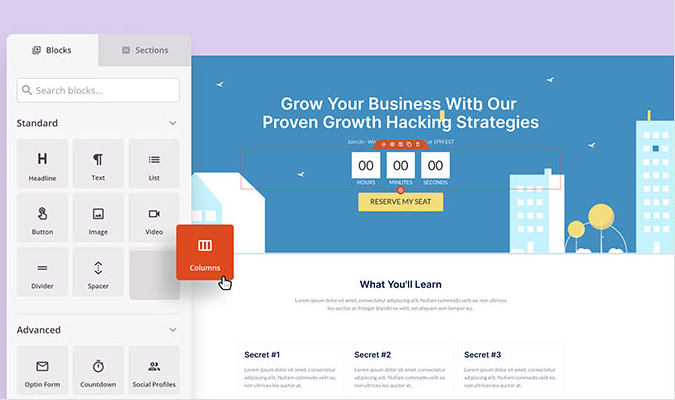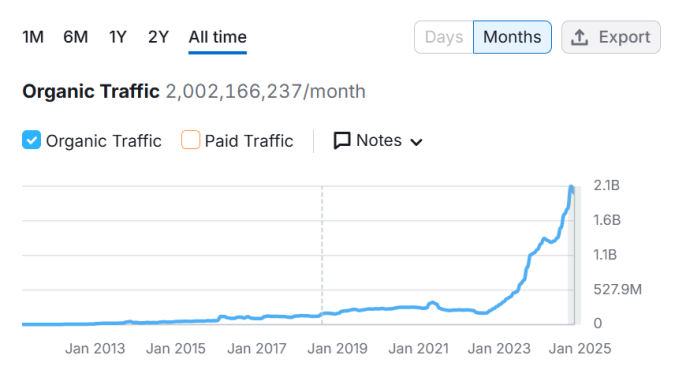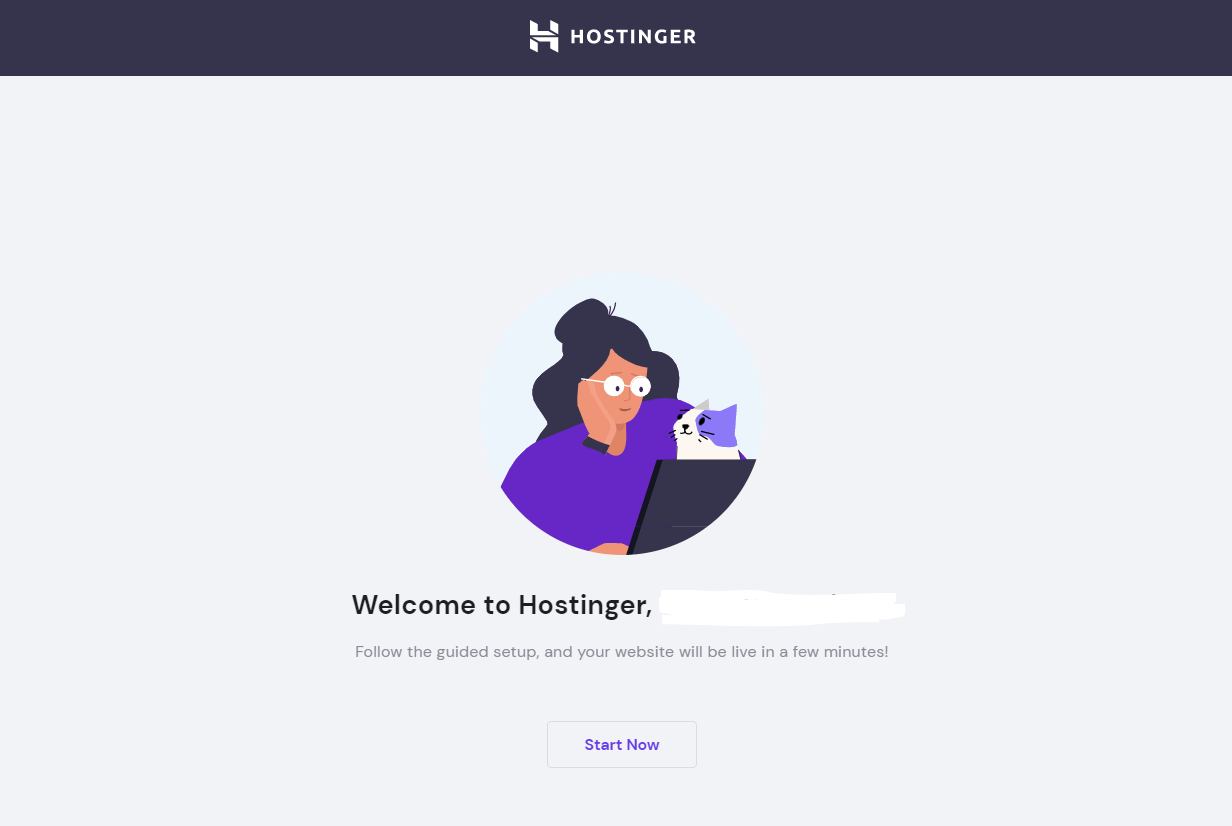There’s no underselling the importance of having a solid online footprint. Successful companies today not only have a website to reach more customers, drive growth, and increase revenue but realize the value of having a memorable, relevant domain name for your website.
However, finding and purchasing a domain name can be overwhelming and challenging. So, we’ve analyzed different domain registrars and summarized our findings in this article. Read on to find out how to register a domain name in seven easy steps, plus a few smart tips to protect your domain for the long haul.
Crazy Egg’s Favorite Tools for Registering a Domain Name for Your Website
Below, you’ll find our Golden Eggs, the best domain name registrars among the dozens we researched.
Hostinger is the best way to secure quality hosting and a domain name in one fell swoop. Get web hosting with introductory rates often starting around the low single digits per month, plus a drag-and-drop website builder to get you started with ease.
Domain.com offers affordable prices for new domain registrations and transparent renewal rates. Search Domain.com’s database of available URLs.
Porkbun is ideal for finding alternative domain extensions to .com that can make your URL more memorable. They now offer well over 500 domain extensions across categories, so you can usually find something that fits. Browse Porkbun’s vast selection today.
Network Solutions is the best way to lock up your domain for the long term—even for decades—via extended protection plans and auto-renewals. Tap into their wide array of domain buying options.
Namecheap does what its name promises, allowing you to secure a domain and full identity protection for a low price. For most eligible extensions, privacy is included. Lock down your ideal URL today.

More Top Domain Registrars
We’ve gone deep into this category since so many businesses and people need to find a way to find and secure domains in a crowded marketplace. Our reviews analyze and dissect what each of these domain registrars has to offer to help you find the best match for your requirements. Take a look at our top picks for domain registration.
Step 1 – Choose a Reliable Domain Name Registrar
Whether you are purchasing for a business or personal website, you have to secure and register your domain name through a certified registrar. There are a vast number of options to choose from, so this can be tougher than it sounds.
It is crucial to analyze and clearly understand the policies of any domain registrar you may potentially use because the goal here is to find one that can manage your domain name for the long haul. Consider the following when assessing your options:
- Check the transparency of the company’s pricing (intro rates, renewals, ICANN fees, and add-ons)
- Read its rules and policies for domain expiration, grace periods, and redemption fees
- Ask for any additional services that they may provide (DNS hosting, email, SSL, website builder)
- Look for a reliable customer support service with 24/7 access
- Check the amount of security provided (2FA, domain lock, DNSSEC support, account recovery)
- Read reviews of other users about their experience and transfer-in/out ease
Pricing, of course, is another thing to pay attention to. You’ll want to examine the initial price tag and any renewal payments to avoid problems later on. Make sure there aren’t any hidden fees that will surprise you later on.
Some of the most popular domain registrars have been mentioned above in our Golden Eggs. We love Hostinger as a reputable all-in-one option.

With Hostinger, you can set up all of the essentials to get your website off the ground and accessible to visitors. Search for a domain name, select the best available option, then choose your Hostinger hosting plan, and you’re all set—often in 15–30 minutes.
Best of all, many hosting plans include the first year of an eligible domain at no extra cost, so you can bundle hosting, domain, and privacy protection to save money.
Hostinger is one of the best options overall, but if you already have web hosting secured, look to a quality company that specializes in domain registration, like Domain.com or Porkbun.
Step 2 – Brainstorm and Finalize the Domain Name
Now, let’s not get too far ahead of ourselves. After you’ve chosen a solid registrar, you still need to find an available domain to secure that also fits your brand or website’s identity.
You’re going to want options—a lot of appealing domains (especially with the .com extension) have been claimed already. Make sure that you come up with a list of names and keywords that fit what you’re looking for, as well as alternative extensions (such as .io, .dev, .shop, or even niche options) you’d be comfortable with using. If yourbusinessname.com is already taken, you’re going to need some alternatives you’ll be happy with.
Take your time brainstorming. Just keep in mind these key points that can help guide your process:
- Choose a name that fits your brand and passes the “radio test” (easy to say, spell, and remember)
- Avoid double letters if you can (they make your URL easier to misspell)
- Opt for short and concise over a long domain
- Avoid adding any numbers or hyphens to the name
- Make sure it is easy to spell and remember
- Use keywords related to your brand where natural (don’t force it)
- Consider using your location (e.g., city or state) in combination with other keywords
If you are struggling with finalizing a name, you can use the help of artificial intelligence suggestions found in some brand and domain name generators. You can find tools like this on Shopify’s website or Namecheap.
Once you have finalized your list of acceptable options, you can move on to the next step of domain name registration: searching for which ones are available to purchase.
Step 3 – Search for the Availability of Your Domain Name
Take your list of options and plug them into your domain registrar of choice’s search bar. Some registrars even let you search in bulk, making this process easier and less headache-inducing.
It can be disappointing to discover your ideal domain name is unavailable. However, it is important to remember that hundreds of thousands of domain name options are out there, and many more are added daily. Just keep an open mind and be willing to modify it a bit.
To get ahead of this step, rank the options you brainstormed in Step 2 in order of preference, so if one is taken, you can just move down the list.
Step 4 – Consider Your TLD
The famous .com that comes at the end of a URL is just one of many top-level domains (TLD), also known as domain extensions or suffixes. You’ve likely heard of others, like .net, as well as ones like .gov and .edu for specific and regulated sectors. There are even region-specific extensions. For example, a business in London may use a .uk suffix, or a website in Germany may end in .de.
While a .com is understandably most people’s first choice, you ought to consider the possibilities of less typical or newer TLDs. When utilized correctly, these can actually make your URL more memorable than a typical .com.
For example, use extensions like .beauty or .makeup if you’re selling cosmetics, try .health if your site’s focus is medicine or wellness (some industry TLDs have verification rules), or lend your new website some extra credibility with a .pro or .expert TLD.
This can be especially useful if you’re a local business. Say you’re a tattoo parlor based in Bellingham, Washington. You could secure a descriptive TLD like a .tattoo for your shop, which would be easy for someone looking to get new ink in the area to remember when they’re looking for a good tattoo parlor.
Alternative TLDs often cost less than comparable .com options (sometimes significantly so), and many registrars run frequent promos with steep first-year discounts. Keep in mind that renewal pricing may be higher than the intro rate.
This is where a registrar like Porkbun really shines. They have hundreds of alternative TLDs to choose from, and they’re adding new ones and running deals on them all the time.
Step 5 – Add Privacy Protection
This is not a mandatory step in domain registration, but it’s one we highly recommend taking advantage of.
When you buy a domain, you will have to provide information like your name, physical address, email address, and phone number. By default, those contact details can appear in public lookup services (commonly called WHOIS/RDAP). Many registrars offer a privacy/proxy service that masks your information.
Privacy protection shields your details from public view, replacing your personal information with generic or proxy information. It also helps reduce spam and protects you from phishing or identity theft.
Some registrars will make you pay a one-time or annual fee for this. But two of our top picks—Namecheap and Porkbun—include domain privacy for eligible TLDs at no extra cost.
Step 6 – Make Your Purchase
Alright, so now you have your domain picked out and your private information protected. Now it’s time to finally secure your internet real estate and buy it.
The amount you pay will depend on what domain you selected and your chosen registrar. Be mindful of renewal rates at this point—your registrar should clearly show you what the renewal price will be at checkout, alongside what you have to pay today. While the first year may be a steal, your renewal rate could be quite expensive.
Registration terms are also a big consideration at the checkout stage. Most registrars offer one to ten years per registration. If you want long-term peace of mind, look for auto-renew, multi-year discounts, and optional protection plans from providers like Network Solutions that keep your domain renewed for decades via continuous renewals.
The longer the term you can afford when initially securing your domain, the less you’ll have to worry about renewal, both in terms of renewal rates and making sure you renew your domain on time to avoid losing it to someone else after your term expires.
But it’s not feasible for everyone to pony up five or ten years’ worth of registration upfront. That can make your day-one cost rise up into the triple digits. So, carefully consider how much you’re willing to pay now versus how high of a renewal rate you’ll be comfortable with when your initial term lapses. Enabling auto-renew and adding a current backup payment method can prevent accidental lapses.
Step 7 – Verify Ownership and Connect Your Domain to Your Site
The last step in registering a domain name for your website is to verify the domain ownership through the email address that you provided while registering your domain name. Once you finish the domain registration process, you’ll receive an email for verification—complete this promptly to keep your domain active.
Simply follow the verification link in the email to verify your contact information and the ownership of the domain name.
After that point, you’ll need to set things up so that your new domain name points web visitors to your website. That involves configuring the domain name system (DNS) on your hosting provider’s servers so that your domain points to your website.
If you went with one of our recommended registrars, this will be easy enough. Most will even do it for you without you having to lift a finger. Or, at the very least, their support and help center can guide you through the process and any troubleshooting. And this process is especially easy if you sourced your domain through a hosting provider like Hostinger. While you’re at it, enable domain lock, set up DNSSEC if supported, and add an SSL certificate so your site loads over HTTPS.






